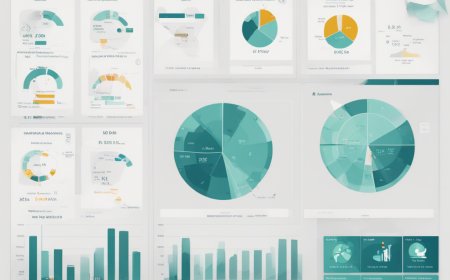Playing with Fire: How Social Media Recruitment Risks the Future of Scientific Integrity
Unmasking the deceiving allure of social media data collection in academic research and highlighting the critical role of research data governance. The article delves into issues compromising data validity such as bot-generated responses and geo-location inconsistencies, underlining the urgency for enhanced scientific publication standards and research data governance in universities and research organizations to preserve academic credibility

Emerging research methodologies have embraced the utility of social media as a recruitment tool, with a particular focus on platforms such as Twitter for gathering self-reported survey data (1, 2). This approach often leverages the inherent network structures of such platforms to enhance participant reach, exploiting the followers and 'friends' network of the original distributor to create a snowball sampling effect. This paper by Informd Decision Making (IDM) - a private research organization based in Saudi Arabia - critically examines the validity of such methodology, investigating three underlying assumptions and the potential implications for data integrity.
The first assumption pertains to the geographic specificity of respondents. As the original distributor shares the survey, it is generally assumed that the responses gathered will predominantly be from their geographic locale, be it a country or more localized region (1, 2). The second assumption is that the respondents are human, not bots, and the final assumption is that all responses originate from the initial post and its associated web link.
Our investigation analyzed secondary data from a mental health assessment tool disseminated on Twitter, verifying respondents' location through IP addresses using the MaxMind© service, which boasts 99.8% accuracy at a country level (3). The study assumed all respondents were from Saudi Arabia due to the initial distribution via a Saudi organization's Twitter account. Further validity checks were conducted by scanning response IP addresses for signs of Googlebot activity (4, 5). This web crawler is known to complete online forms, so its presence would indicate bot involvement in the data collection (4, 6).
The results were enlightening. Of the 1,184,122 responses gathered over two months, they originated from 153 countries with only 20.1% from the assumed Saudi Arabia. There were 37 responses identifiable as being completed by Googlebot, and the original survey web-link was found on 102 unique websites, including Facebook and Telegram, highlighting the extent of its redistribution.
The aforementioned results illuminate a stark reality concerning the inherent pitfalls of recruiting self-reported survey participants through social media platforms. It would seem that this practice, though popular for its perceived convenience and reach, can unintentionally compromise the integrity of the research process and its consequent findings.
Firstly, the issue of geographic specificity arises. In the pursuit of accurate, locale-specific data, it becomes evident that social media platforms might serve as a smokescreen rather than a magnifying glass. The vast and transnational nature of social media networks undermines the localization of research data collection, casting a wider net than may be beneficial or even accurate for the study at hand. This often results in a geographic scatter of participants that detracts from the study's intended scope and specificity, reducing the validity of the data and subsequently skewing the results.
Moreover, the presence of bot-generated responses poses another disconcerting obstacle. With the digital landscape becoming ever more populated by these automated entities, it's alarmingly easy for bots to masquerade as human respondents. These bot responses, undetectable by most traditional data verification measures, are void of any substantive human input and instead produce data that's not only unusable but potentially misleading. This essentially contaminates the data pool, damaging the overall integrity of the research findings and potentially leading to false conclusions.
The uncontrolled redistribution of survey links further exacerbates the aforementioned issues, propelling the problem beyond the confines of the initial social media platform. As the survey link disseminates across multiple platforms and networks, control over the participant pool becomes an elusive goal for researchers. The participants' origin and authenticity become increasingly hard to trace, and the potential for duplication or even fraudulent responses increases. This lack of control undermines the very basis of credible research, introducing high levels of uncertainty and bias.
The realm of scientific publishing holds significant sway in the academic community, setting the tone and standard for research integrity. As such, the onus rests on scientific journals to take the lead in implementing more stringent publication requirements. Without these stringent measures, research employing social media for participant recruitment is susceptible to a host of validity and transparency concerns, which potentially jeopardize not only individual studies but also the broader credibility of the scientific community.
The deceptive nature of data obtained from social media can subtly and insidiously undermine the robustness of scholarly work. A research study could appear to be grounded on substantial, well-sourced data, while in reality, it is mired in the murkiness of geo-location inaccuracy, bot-generated responses, and uncontrolled data spread. If such studies are accepted and published without thorough vetting and rigorous standards, the academic community unwittingly becomes a conduit for misleading or erroneous information.
This possibility is more than a mere academic misstep. It has profound implications for the credibility and integrity of the broader scientific community. If research based on deceiving or compromised data from social media becomes the norm, or even a noticeable trend, the faith placed in scientific literature as a reliable source of knowledge and insight could be significantly damaged. The ripple effects of this could extend beyond the research community to impact policy-making, industry decisions, and public opinion, areas where research-based evidence is often pivotal.
Hence, it is imperative for scientific journals to act proactively. They should consider implementing stringent publication requirements aimed at upholding and enhancing the standards of reporting, data validity, and transparency. Such measures could include rigorous peer-review processes that factor in the challenges of social media data, requirements for detailed disclosure of data collection and verification methods, and perhaps even the implementation of software tools that can help detect anomalies indicative of bot responses or geo-location inconsistencies.
Scientific journals, by raising the bar for research rigor, will not only be protecting their own reputation but also safeguarding the credibility and integrity of the entire research community. This action would send a clear message to researchers, readers, and society at large: that quality, validity, and transparency in scientific research are paramount and non-negotiable, even in the face of evolving research methodologies.
A noteworthy facet of this discourse pertains to the glaring absence of robust research data governance within many research organizations and universities. This oversight, coupled with the convenience of social media data collection, fosters an environment where substandard practices are not just prevalent but potentially endemic.
Data governance encompasses the people, processes, and technology required to manage and ensure the availability, integrity, and security of data. Its implementation is fundamental to maintaining high research standards, safeguarding ethical practices, and ensuring data quality and consistency. However, the lack of such governing structures within many academic institutions has inadvertently made the ill-governed domain of social media a breeding ground for data collection.
The convenience and seeming cost-effectiveness of social media as a data source can appear irresistible to many researchers, particularly in the absence of a governing body emphasizing the value of data quality over quantity. Consequently, this often leads to the prioritization of ease over ethics and convenience over credibility.
Moreover, without effective data governance, there is a higher risk of bias, misinterpretation, and, most concerning, the acceptance of invalid or misleading results. This laxity subtly undermines the credibility of academic research, gradually eroding public trust and the esteem in which scholarly studies are held.
Therefore, strengthening research data governance in academic institutions is a critical measure. This involves not only implementing clear policies and standards regarding data collection and analysis but also providing regular training to researchers on these guidelines. This approach would equip researchers to recognize and resist the allure of easy data from social media, ultimately leading to more rigorous, valid, and credible research outcomes.
With current survey and form-building applications lacking robust protection measures against unwanted submissions or location validation, the use of social media for research recruitment should be carefully considered. The allure of accessing a large participant pool should not overshadow the methodological challenges associated with social media data collection, and new, improved methods should be explored for future research (8). Furthermore, scientific journals should consider implementing more rigorous publication requirements to enhance the reporting standards, data validity, and transparency of research using social media for recruiting participants.
References
1. De Backer C, Teunissen L, Cuykx I, Decorte P, Pabian S, Gerritsen S, et al. An Evaluation of the COVID-19 Pandemic and Perceived Social Distancing Policies in Relation to Planning, Selecting, and Preparing Healthy Meals: An Observational Study in 38 Countries Worldwide. Frontiers in nutrition. 2020;7.
2. Aljammaz K, Alrashed A, Alzwaid A. Irritable bowel syndrome: Epidemiology and risk factors in the adult Saudi population of the central region. Nigerian Journal of Clinical Practice. 2020;23(10):1414.
3. MaxMind. GeoIP [Available from: https://support.maxmind.com/geoip-faq/specifications-and-implementation/how-accurate-is-geoip2/#:~:text=MaxMind%20tests%20the%20accuracy%20of,within%20a%2050%20kilometer%20radius.
4. Google. How to verify Googlebot [Available from: https://developers.google.com/search/blog/2006/09/how-to-verify-googlebot.
5. Google. How Google Search Works [Available from: https://developers.google.com/search/docs/beginner/how-search-works.
6. Kausar MA, Dhaka V, Singh SK. Web crawler: a review. International Journal of Computer Applications. 2013;63(2).
7. Google. Crawling through HTML forms [Available from: https://developers.google.com/search/blog/2008/04/crawling-through-html-forms.
Disclaimer: The image(s) featured in this article are for illustrative purposes only and may not directly depict the specific concepts, situations, or individuals discussed in the content. Their purpose is to enhance the reader's understanding and visual experience. Please do not interpret the images as literal representations of the topics addressed.
What's Your Reaction?












































































































